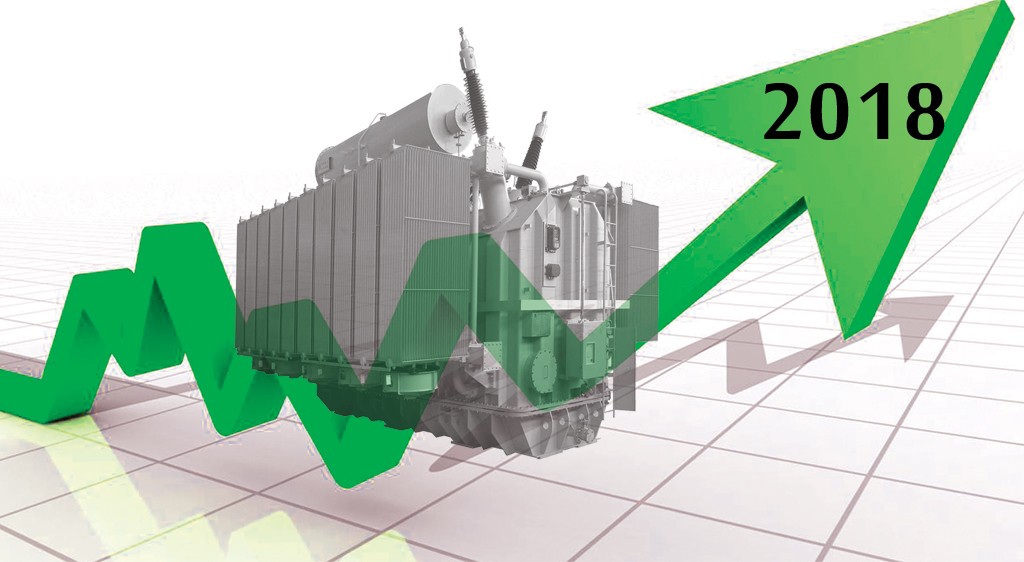Top Transformer Industry Trends in 2018
By EPR Magazine Editorial January 8, 2018 6:38 pm IST
By EPR Magazine Editorial January 8, 2018 6:38 pm IST

A discussion on key trends that will dominate 2018.
Energy efficiency in all aspects is the central trend that is poised to dominate in 2018, particularly as the government seeks to meet its ambitious target of ‘Power for All’ at the earliest. While boosting output is one way to achieve power targets, energy efficiency is another means of augmenting the overall power capacity via less wastage and more efficient, lower consumption. Energy efficiency also takes the country closer to its lower carbon emission targets under the UN SDGs (Sustainable Development Goals).
In this context, consider transformers, which are an indispensable component of an alternate current (AC) electrical system for electricity generation, transmission or distribution. “The biggest trend sweeping the transformer market is towards increasing efficiency levels and reducing CO2 emissions in compliance with stricter environmental norms. It is extremely crucial to consider long-term safety and environmental factors while evaluating a transformer. For utility-type transformers, the long-term trend has been towards designing them for increased efficiency of operation (lower losses), based on the rising costs of wasted energy in the utility grid,” says Anil Kadam, GM – Business Development and Solution Architect, Schneider Electric.
He adds, “Similarly, digitisation in the energy sector is occurring at a rapid pace; again, this will boost energy efficiency. Both in terms of internal infrastructure and external markets, the energy sector are being transformed by the emergence of the smart grid. The grid will be one autonomous energy system steered by analytics: an example of the Internet of Things (IoT) in action. Digitisation of the power grid in the country will ensure better optimisation of resources and more efficient distribution, eventually bringing down the cost of electricity in the country. In all these aspects, energy efficiency will be the overriding element in 2018.”
ABB has set another pioneering innovation record with the successful testing of the low and high voltage units of the world’s most powerful ultrahigh-voltage direct current (UHVDC) transformer. The +/-1,100 kV (1.1 million volts) UHVDC transformer, developed and manufactured in close collaboration with State Grid Corporation of China (SGCC), has successfully passed a series of type tests, paving the way for the implementation of the Changji-Guquan UHVDC link, which will transmit power from the Xinjiang region in the Northwest, to Anhui province in eastern China.
Changji-Guquan, the world’s first +/-1,100 kV UHVDC link will set a new world record in terms of voltage level, transmission capacity and distance. It will be capable of transporting 12,000 megawatts of electricity – the equivalent of 12 large power plants and 50 per cent more than the +/- 800 kV UHVDC links currently in operation. Transmission distance will be extended from around 2,000 km to over 3,000 km, enabling the integration and transmission of remote renewable on a much larger scale.
When fully operational this UHVDC link will be able to feed eight 500 kV and two 1,000 kV AC lines – delivering power equivalent to twice the average annual power consumption of Switzerland. ABB’s latest breakthrough also makes it possible to connect +/-1,100 kV DC with 750 kV UHVAC links for the first time. In addition to the transformer, ABB has also developed and successfully tested a range of other key +/-1,100 kV components, including converter valves, bushings and DC circuit breakers.
One dominant trend we have been feeling since 2017 is for industries to conduct life assessment studies for transformer, and the exponential growth of its requirement can be certain as a product of the market sentiment.The biggest trend sweeping the transformer market is towards increasing efficiency levels and reducing CO2 emissions in compliance with stricter environmental norms.
Anil Kadam, GM – Business Development and Solution Architect, Schneider Electric
We use cookies to personalize your experience. By continuing to visit this website you agree to our Terms & Conditions, Privacy Policy and Cookie Policy.